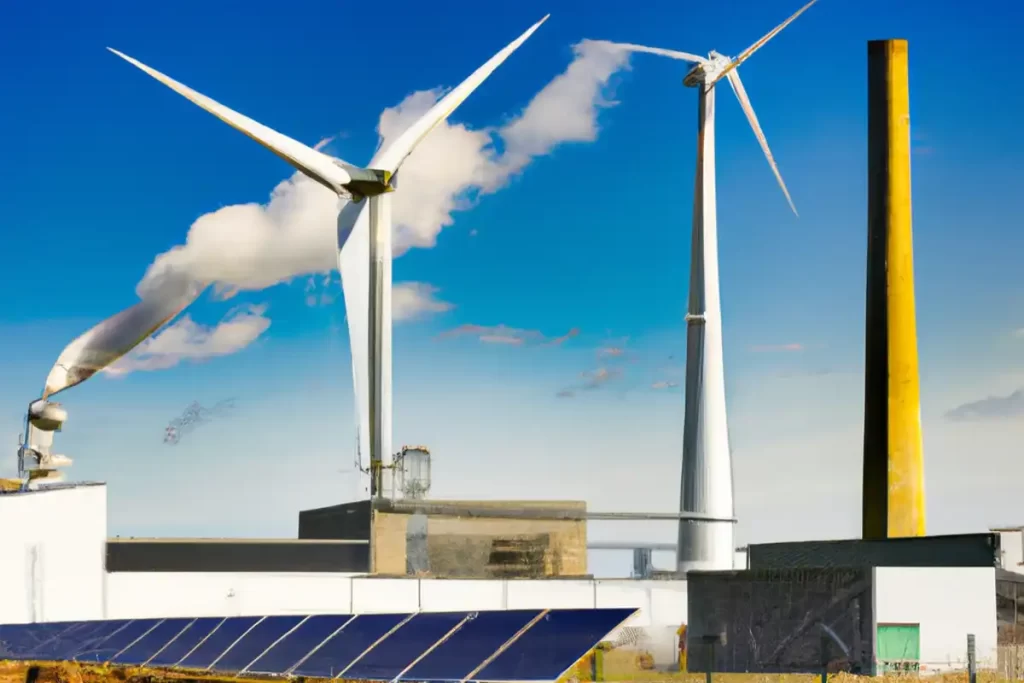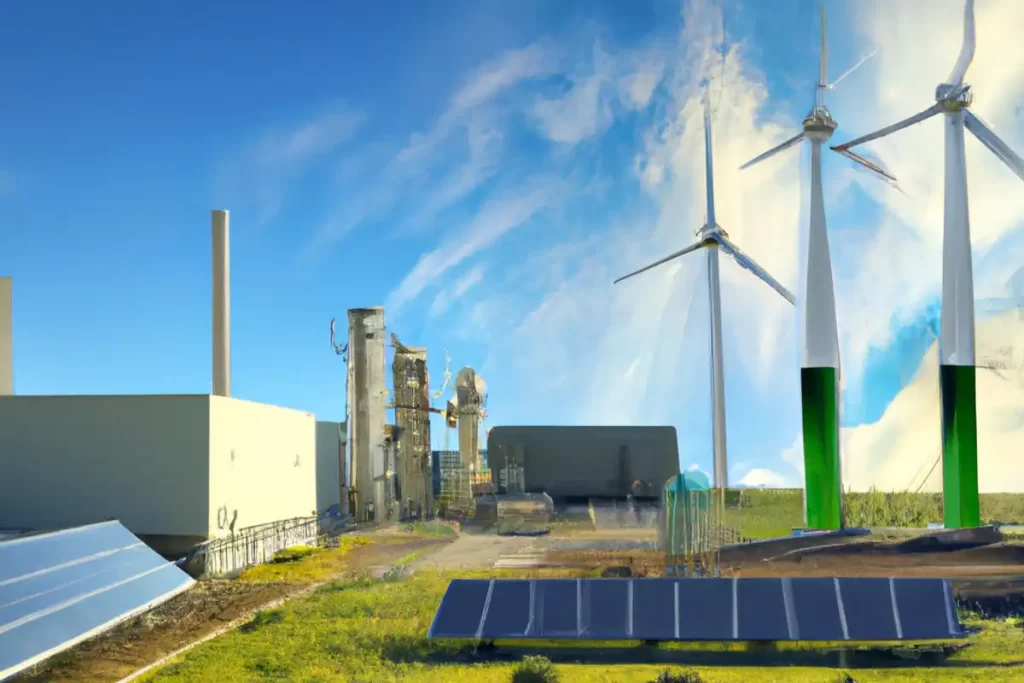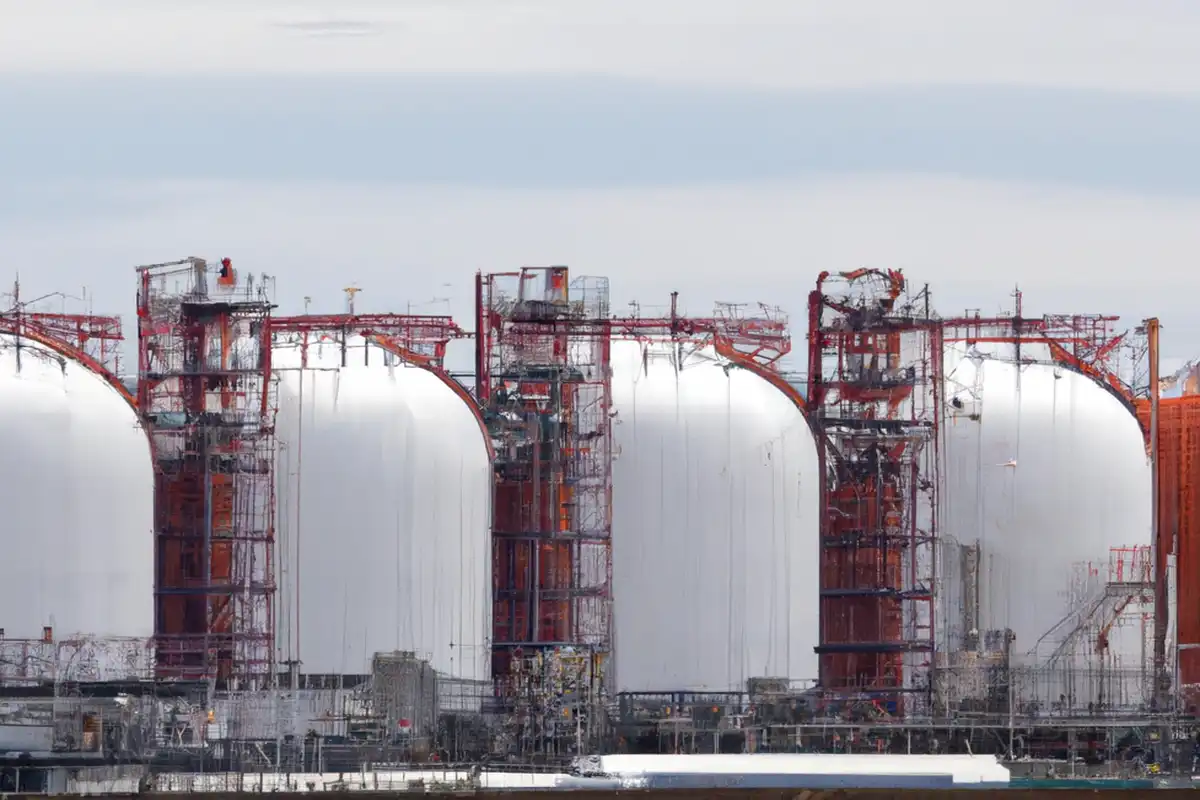The world is shifting towards cleaner and more sustainable energy sources, and green ammonia has emerged as an exciting and environmentally friendly alternative. Green ammonia is an environmentally friendly alternative to traditional ammonia, produced using green hydrogen derived from renewable energy sources. It has the potential to reduce greenhouse gas emissions and support various industries, including agriculture and transportation, in achieving a more sustainable future. The term “green ammonia” does not refer to the color of the ammonia. Instead, it refers to the environmentally friendly nature of its production process. This post will explore the concept of green ammonia, its production, applications, challenges, and its potential to contribute to a sustainable future.
What is Green Hydrogen, and How is it Related to Green Ammonia?
Green hydrogen is hydrogen produced using renewable energy sources like wind, solar, and hydropower. It has a significantly lower environmental impact compared to hydrogen derived from fossil fuels, commonly known as grey or blue hydrogen. Green hydrogen plays a crucial role in the production of green ammonia, serving as an essential input for the process [1]. By using green hydrogen, green ammonia production can significantly reduce greenhouse gas emissions and support global efforts to combat climate change.
What is Ammonia and How is it Produced?
Ammonia is a compound of nitrogen and hydrogen (NH3) with various applications, such as fertilizers, refrigerants, and industrial chemicals [2]. The majority of ammonia is produced through the Haber-Bosch process, which combines nitrogen from the air with hydrogen from natural gas under high temperature and pressure [3]. This process, while efficient, is energy-intensive and relies heavily on fossil fuels, resulting in significant CO2 emissions and environmental concerns.
What Makes Green Ammonia Different?
Green ammonia differs from traditional ammonia in that it is produced using green hydrogen from renewable energy sources. This method significantly reduces the environmental impact of ammonia production, primarily by eliminating CO2 emissions associated with traditional processes [4]. Green ammonia represents a promising path towards more sustainable industrial and agricultural practices, as well as a potential zero-emission fuel for various applications [5].
How Can Green Ammonia Contribute to a Sustainable Future?
- Green ammonia as a zero-emission fuel: When used as a fuel, green ammonia releases only water and nitrogen upon combustion, making it an attractive option for a variety of sectors, including transportation and power generation [6].
- Reduction of greenhouse gas emissions: By replacing traditional ammonia with green ammonia, industries can significantly reduce their carbon footprint and contribute to global climate goals.
- Potential applications in various industries: Green ammonia can be used in agriculture as a sustainable fertilizer, as well as a fuel for shipping, aviation, and other transportation sectors [7].

What are the Challenges of Producing Green Ammonia?
- Technological barriers: Current electrolysis technology and catalysts need further improvement to enhance efficiency and reduce energy consumption in green ammonia production [8].
- Economic considerations: Green ammonia production costs are currently higher than those of traditional ammonia, making it less competitive in the market [9].
- Infrastructure and scaling issues: Investments in production facilities and renewable energy infrastructure are required to scale up green ammonia production and distribution.
What is the Benefit of Green Ammonia?
Green ammonia offers several advantages over traditional ammonia production. First, it significantly reduces greenhouse gas emissions and the overall environmental impact of ammonia production by using green hydrogen from renewable energy sources. Second, green ammonia has the potential to contribute to various industries’ sustainability, such as agriculture, transportation, and power generation. Its use as a zero-emission fuel and sustainable fertilizer helps reduce the carbon footprint of these sectors and support global climate goals.
What is the Difference Between Green Hydrogen and Green Ammonia?
Green hydrogen is hydrogen produced using renewable energy sources, resulting in a lower environmental impact compared to hydrogen derived from fossil fuels. Green ammonia, on the other hand, is ammonia produced using green hydrogen as an input. The primary difference between the two lies in their applications and uses. Green hydrogen serves as a versatile energy carrier with potential applications in various sectors, while green ammonia is used primarily as a sustainable fertilizer, a fuel for specific industries, and an energy storage medium [10].
Can Green Ammonia be Used in Cars?
While green ammonia has potential as a fuel for vehicles, its use in cars is still in the early stages of development. Some prototypes of green ammonia-powered vehicles, such as buses and trucks, have been tested with promising results [11]. However, there are challenges and limitations to consider, including the need for specialized fuel systems and storage solutions, as well as the current lack of refueling infrastructure for ammonia [12]. As research and development continue, the feasibility of using green ammonia in cars may improve, but widespread adoption will likely depend on overcoming these challenges.
Is Green Ammonia Toxic?
Green ammonia has the same chemical composition (NH3) as traditional ammonia, so its toxicity levels are similar. Both forms of ammonia can be hazardous when inhaled, ingested, or in contact with skin and eyes. Exposure to high concentrations of ammonia can cause serious health issues, such as respiratory irritation, burns, or even death [13]. However, green ammonia’s environmental benefits do not negate the need for proper handling and safety measures. It is crucial to follow appropriate guidelines for the storage, transportation, and use of green ammonia to minimize health risks.

Why is Green Ammonia Expensive?
The high cost of green ammonia production is primarily due to the use of green hydrogen, which is currently more expensive to produce than hydrogen derived from fossil fuels. Additionally, the electrolysis technology used to produce green hydrogen is energy-intensive, and the catalysts needed for green ammonia synthesis are often costly. However, ongoing research and development efforts may lead to more efficient production processes, and the increasing adoption of renewable energy sources could help reduce the cost of green hydrogen in the future. As these developments unfold, the price of green ammonia is expected to become more competitive with traditional ammonia.
What are the Current Developments in Green Ammonia Technology?
- Advances in electrochemical processes: Researchers are working on improving efficiency and reducing energy consumption in the electrolysis process used to produce green hydrogen [14].
- Breakthroughs in catalyst technologies: New materials and catalyst designs are being developed to enhance the efficiency of ammonia synthesis from green hydrogen and nitrogen [15,16].
- Innovations in renewable energy integration: Better methods for integrating renewable energy sources into the ammonia production process are being explored to optimize efficiency and reduce costs [17,18].
How is the Global Market for Green Ammonia Shaping Up?
- Overview of the current green ammonia market: The green ammonia market is growing rapidly, driven by increasing demand for clean energy solutions and supportive government policies [19].
- Emerging players in the green ammonia industry: Key companies are investing in green ammonia production, driving innovation and market growth.
- Regional trends and government policies: Governments around the world are implementing policies and incentives to support the development and adoption of green ammonia, recognizing its potential in achieving climate targets and fostering sustainable growth [20].
What Does the Future Hold for Green Ammonia?
- Potential growth and adoption of green ammonia: As technology advances and production costs decrease, green ammonia is expected to play a more prominent role in various industries, helping to reduce global greenhouse gas emissions.
- Outlook on technological advancements: Ongoing research and development efforts are likely to result in further improvements in green ammonia production efficiency and cost competitiveness.
- Implications for a sustainable and low-carbon future: The widespread adoption of green ammonia could contribute significantly to a more sustainable global economy, supporting the transition towards cleaner energy sources and more eco-friendly industrial practices.

